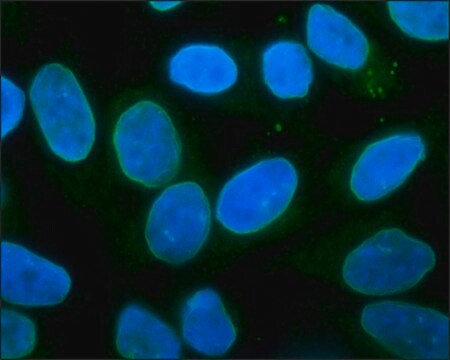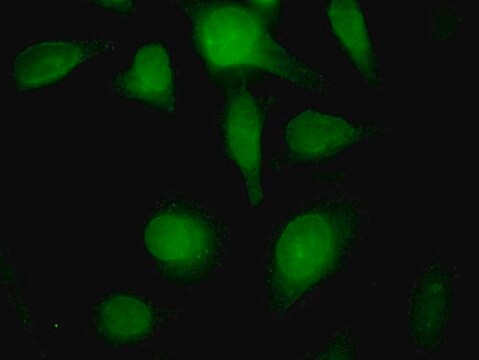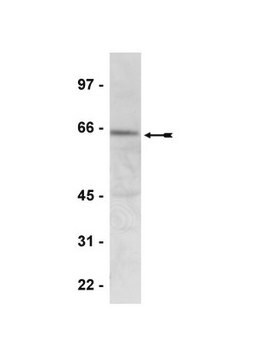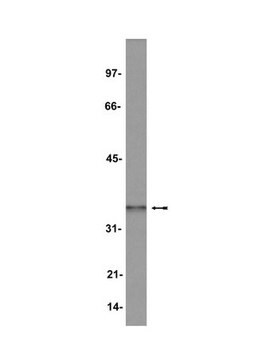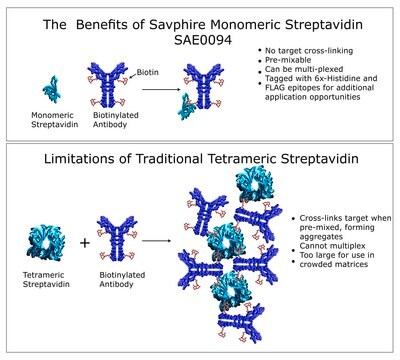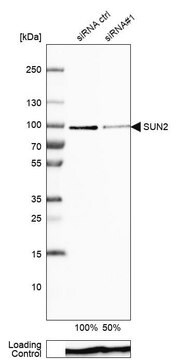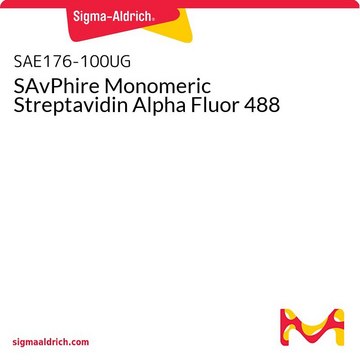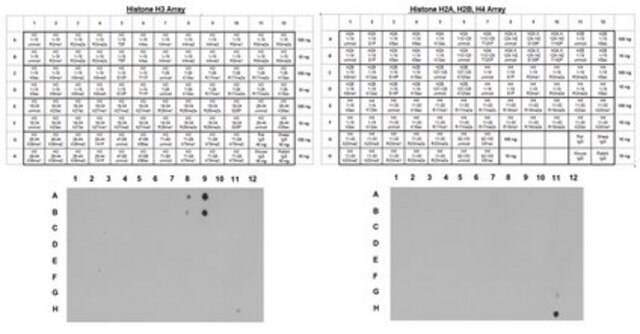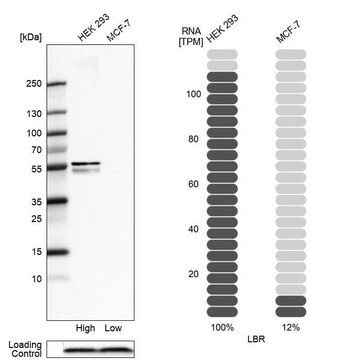MABT831
Anti-Lamin B Receptor (LBR) Antibody, clone BB2SS3F3
clone BB2SS3F3, from mouse
Sinônimo(s):
LMN2R, Integral nuclear envelope inner membrane protein, LBR
About This Item
Produtos recomendados
fonte biológica
mouse
Nível de qualidade
forma do anticorpo
purified immunoglobulin
tipo de produto de anticorpo
primary antibodies
clone
BB2SS3F3, monoclonal
reatividade de espécies
mouse, human
embalagem
antibody small pack of 25 μg
técnica(s)
immunocytochemistry: suitable
immunofluorescence: suitable
western blot: suitable
Isotipo
IgG1κ
nº de adesão NCBI
nº de adesão UniProt
Condições de expedição
ambient
modificação pós-traducional do alvo
unmodified
Informações sobre genes
human ... LBR(3930)
Descrição geral
Especificidade
Imunogênio
Aplicação
Western Blotting Analysis: A representative lot detected Lamin B Receptor (LBR) in HeLa cell lysate, mouse C2C12 cell lysate, and in adult mouse fibroblasts (MAFs) either LBR+/+ or LBR -/- (Courtesy of Dr. Brian Burke, Institute of Medical Biology, A*STAR, Singapore).
Immunocytochemistry Analysis: A 1:50 dilution from a representative lot detected Lamin B Receptor (LBR) in HeLa cells.
Immunocytochemistry Analysis: A representative lot detected Lamin B Receptor (LBR) in HeLa and NIE-115 cells, as well as in mouse adult fibroblasts (MAF LBR+/+ vs MAF LBR-/-) (Courtesy of Dr. Brian Burke, Institute of Medical Biology, A*STAR, Singapore).
Cell Structure
Qualidade
Western Blotting Analysis: 2 µg/mL of this antibody detected Lamin B Receptor (LBR) in 10 µg of mouse spleen tissue lysate.
Descrição-alvo
forma física
Armazenamento e estabilidade
Outras notas
Exoneração de responsabilidade
Não está encontrando o produto certo?
Experimente o nosso Ferramenta de seleção de produtos.
Código de classe de armazenamento
12 - Non Combustible Liquids
Classe de risco de água (WGK)
WGK 1
Ponto de fulgor (°F)
does not flash
Ponto de fulgor (°C)
does not flash
Certificados de análise (COA)
Busque Certificados de análise (COA) digitando o Número do Lote do produto. Os números de lote e remessa podem ser encontrados no rótulo de um produto após a palavra “Lot” ou “Batch”.
Já possui este produto?
Encontre a documentação dos produtos que você adquiriu recentemente na biblioteca de documentos.
Nossa equipe de cientistas tem experiência em todas as áreas de pesquisa, incluindo Life Sciences, ciência de materiais, síntese química, cromatografia, química analítica e muitas outras.
Entre em contato com a assistência técnica